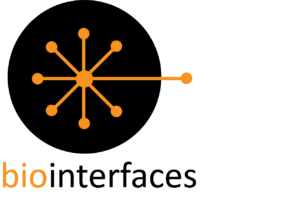Prof. Dr. Danijela Gregurec
Biointerfaces Lab
Prof. Dr. Danijela Gregurec
Section
Food Chemistry
Research areas
Molecular materials:
Energy
Magnetic nanomaterials for conversion of magnetic field energy to thermal, electrical and mechanical energies
Molecular materials:
Information
Wireless communication with cellular signalling activities through magnetic nanoantennas
Molecular materials:
Life science
Functional biomaterials with translational potential in therapeutic applications
Bioactive compounds:
Mechanisms and targets
Mechanistic studies of cell and protein-targeted stimulation of cellular signaling in vitro
In vivo wireless neuromodulation in rodent models
Member of:
Contact us: contact-biointerfaces@fau.de
Visit us online: https://www.chemistry.nat.fau.eu/gregurec-group/


